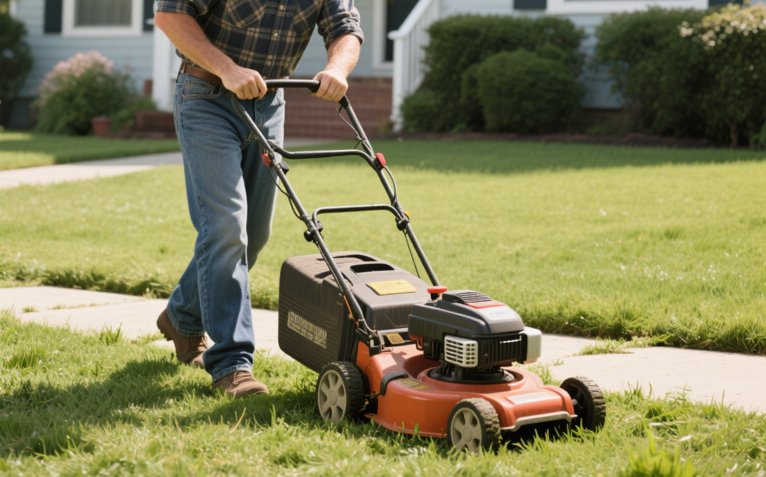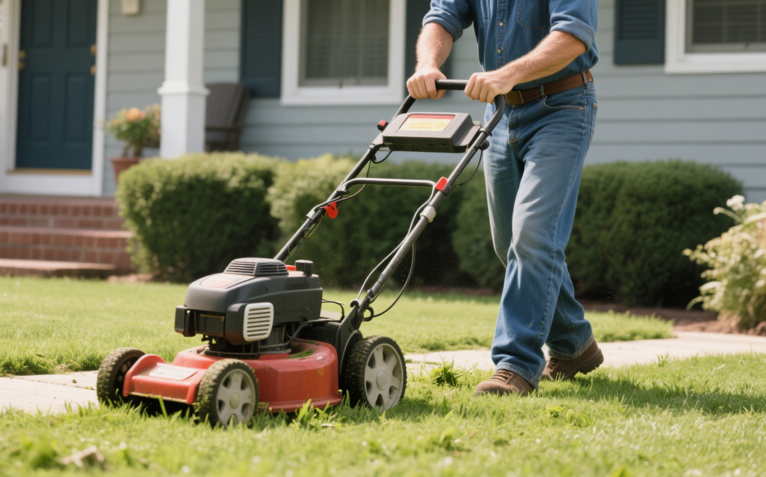After a long, cold winter, lawn mowers are often left sitting idle in garages or storage sheds. With the arrival of spring, it's time to restart your mower and get it ready for a new season of lawn care. Spring lawn mower maintenance not only ensures smooth operation but also extends the life of your equipment, helping you avoid costly repairs caused by neglect. Proper lawn mower startup preparation and maintenance routines are essential tasks for every home gardening enthusiast as the growing season begins.

The first step is to thoroughly clean and inspect your mower. After being stored for months, your lawn mower may be covered in dried grass, oil residue, and dust—substances that can reduce performance and even cause the engine to overheat. Use a brush and damp cloth to remove debris from the blades and outer casing, and make sure all air vents are clean and unobstructed. Then, check the engine oil—if it appears dirty or blackened, it should be replaced immediately. Also, ensure that the oil level is adequate to keep the engine properly lubricated. For gas-powered mowers, it's best to drain any old fuel left from the winter and refill with fresh gasoline to avoid starting issues caused by stale fuel.
Don't overlook essential components like the spark plug, blades, and battery. A spark plug that's fouled with carbon buildup or rust may prevent the mower from starting or cause unstable engine performance. It's a good idea to remove and clean the spark plug—or replace it if needed—to ensure reliable ignition. Inspect the mower blade for cracks, dull edges, or chips. Use a sharpening tool to hone the blade edge so that it cuts cleanly rather than tearing the grass. For electric mowers, battery condition is equally important. Make sure the battery is fully charged, and if it shows signs of aging or fails to hold a charge, consider replacing it to maintain efficiency during mowing.

Once these maintenance tasks are completed, the final step in your spring lawn mower maintenance routine is to test and fine-tune the mower. Before starting it up, double-check that all screws are tightened, tires are in good condition, and drive belts are not worn or cracked. Slowly pull the starter cord to gauge whether the internal mechanisms move freely or produce unusual resistance or noise. If the mower starts successfully, observe whether it runs smoothly, without strange smells or dark exhaust smoke. If you notice vibration, stalling, or other signs of trouble, there may be issues with the air intake, fuel system, or ignition—at that point, it's best to contact a professional repair service for a thorough inspection.
By following this comprehensive spring maintenance routine, you can successfully wake your mower from its winter slumber and prepare it for a new season of efficient lawn care. Whether you own a basic home-use mower or a commercial-grade machine, regular upkeep is key to keeping your equipment in peak condition. Remember, taking the time now for proper spring readiness will not only boost performance but also reduce the risk of mid-season breakdowns and costly repairs. Don't wait until your lawn is out of control to discover your mower won't start—get it into top shape today and enjoy a smooth, productive spring.








